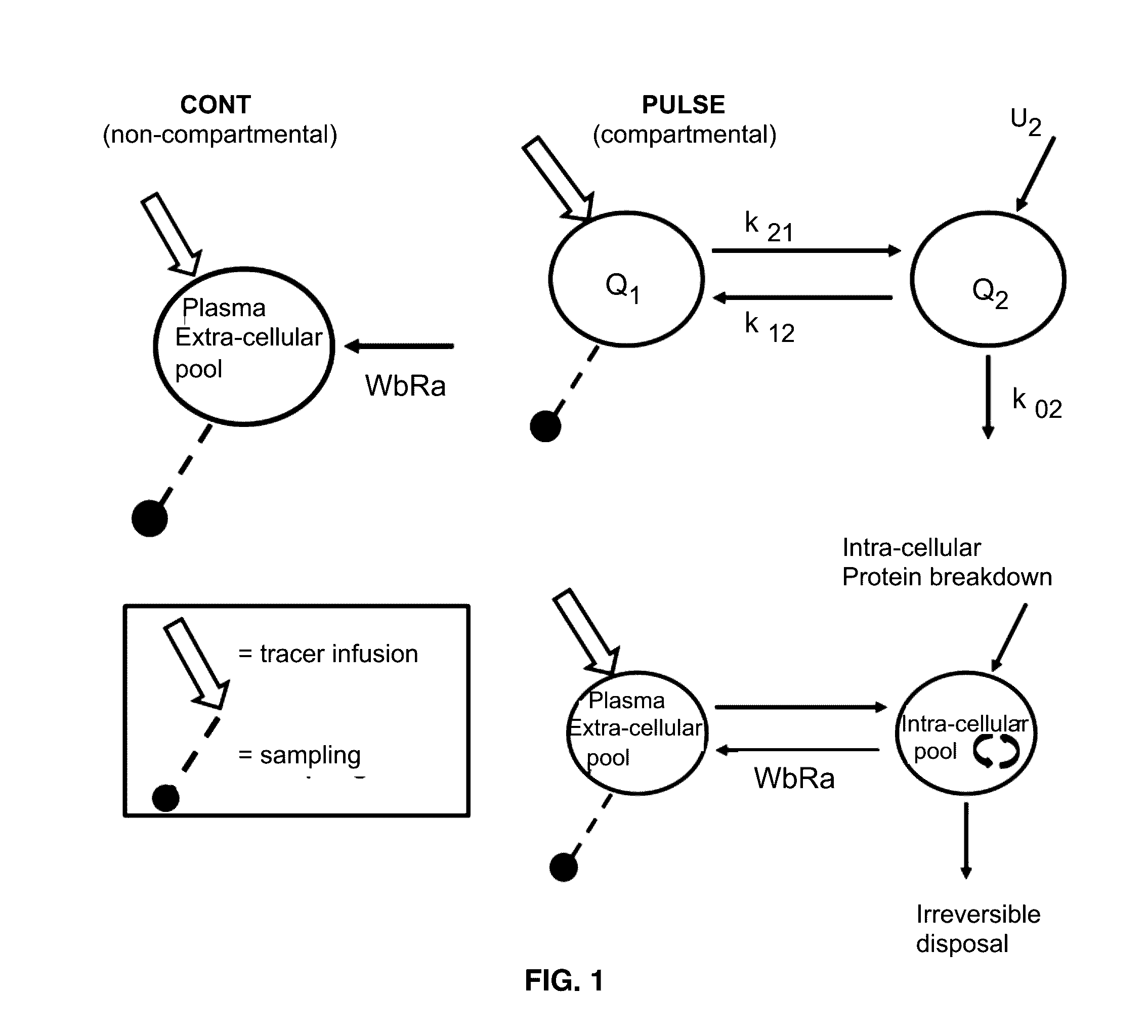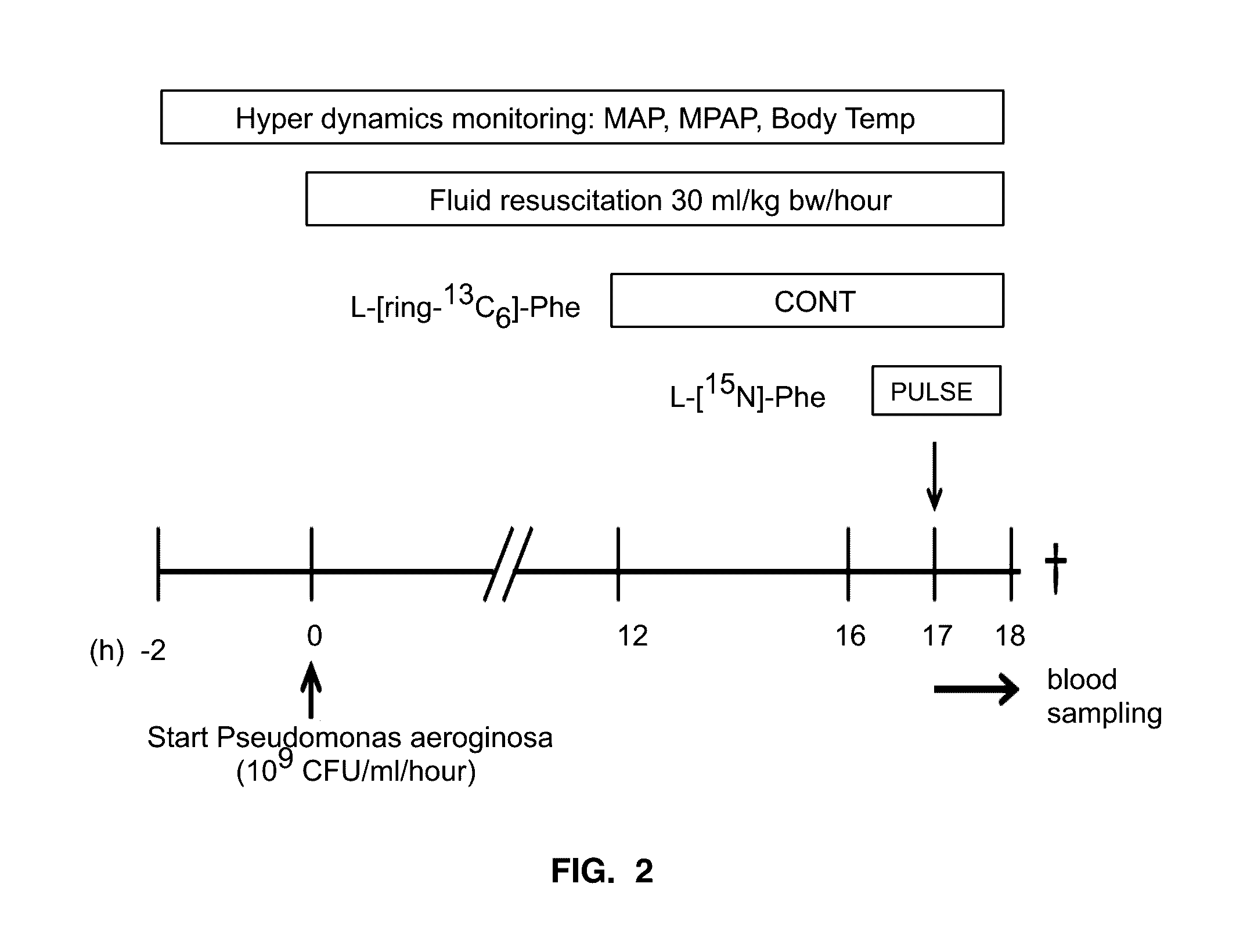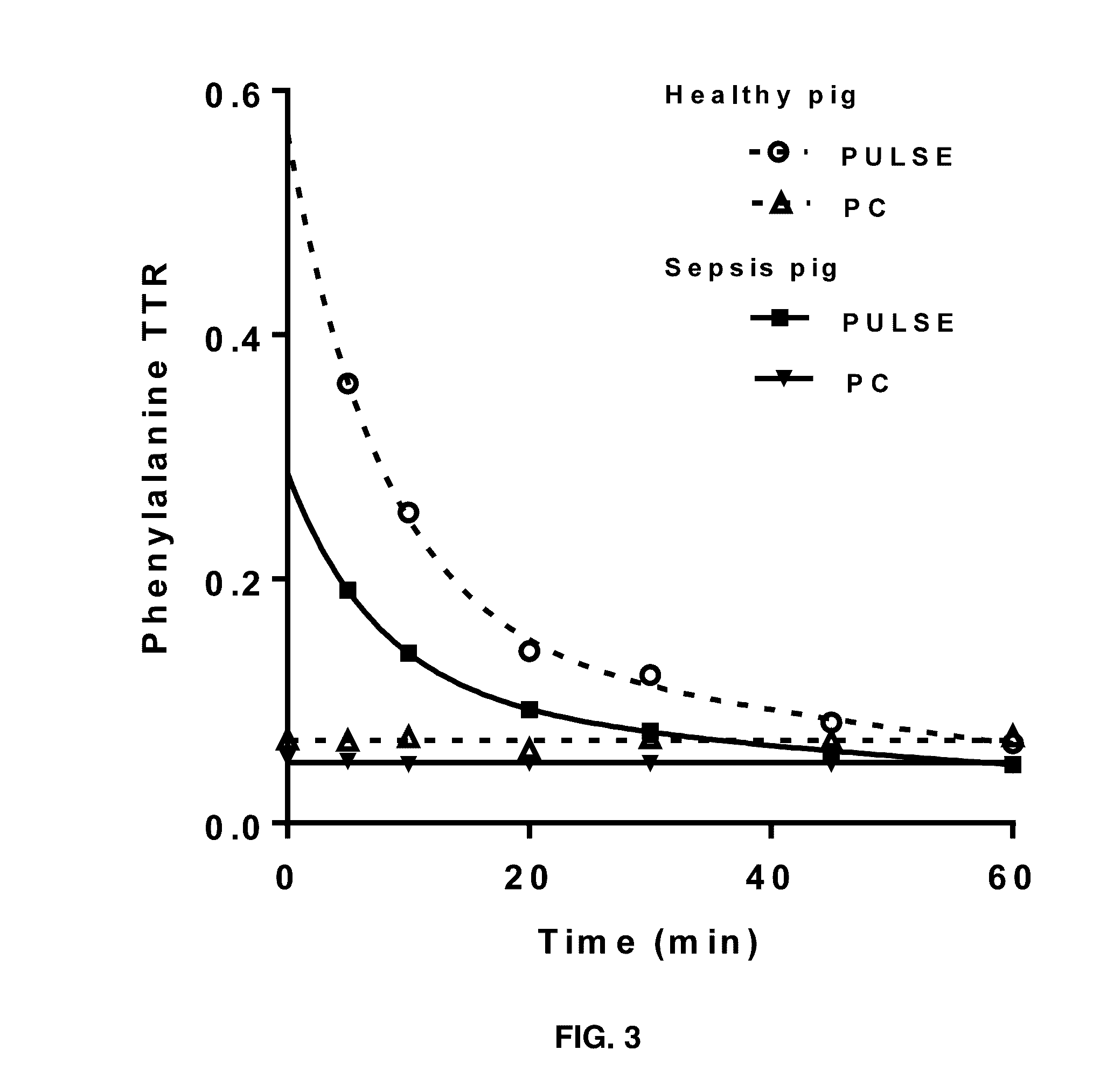Methods of Metabolic Kinetic Phenotyping and Uses Thereof
- Summary
- Abstract
- Description
- Claims
- Application Information
AI Technical Summary
Benefits of technology
Problems solved by technology
Method used
Image
Examples
example 1
Subjects for the Experiment
[0037]Female Yorkshire cross / domestic pigs (20-25 kg BW) were used in the experimental studies. The pigs were housed in steel pens (2 m×3 m) in a controlled housing facility with large animal cubicle at room temperature 22-24° C. with 12 hours light-dark cycle. The pigs were fed with standardized food 1 kg / day (Harlan Teklad Vegetarian Pig / Sow Grower)) and provided water ad libitum.
[0038]Animals received catheters and a jejunal stoma during a surgical procedure. During midline laparotomy, catheters were placed into the abdominal aorta for blood sampling, and in the caval vein for administering post-surgery medication and experiment related tracer infusions. A second arterial catheter was placed to monitor mean arterial blood pressure (MAP). A Swan ganz catheter (5 Fr, #132F5, Edwards life sciences, Irvine, Calif., USA) was placed via the right jugular vein to monitor mean pulmonary blood pressure (MPAP). Both preoperative and postoperative cares were stand...
example 2
Experimental Design
[0040]The experiment started after a recovery period of 7-10 days. Four hours after the last food intake (half of the daily amount: 0.5 kg), animals were selected from the Sepsis group or the Healthy group in a randomized fashion. As illustrated in FIG. 2, the basal monitoring blood pressures were monitored in the pre-septic period (T=−2 h−0 h). At T=0 h, sepsis was induced to the sepsis group by continuous infusion of Pseudomonas aeruginosa (PM, 109 CFU / ml / hour), while the Healthy group received an equal volume of 0.9% NaCl solution. Fluid resuscitation (30 ml / kg bw / hour) was also started at T=0 h and hemodynamics were monitored continuously. The results for the primed-continuous tracer protocol (PC) and the pulse tracer protocol were compared between 17 and 18 hours after the start of Pseudomonas aeruginosa. At t=18 h, the pigs were euthanized with 125 mg / k pentobarbital sodium and 16 mg phenytoin sodium (Euthanasol®).
example 3
Protocols for Infusion and Sampling
Stable Isotopes
[0041]Two stable isotopes of Phe: L-[ring-13C6]-Phe and L-[15N]-Phe (Cambridge Isotopes, Andover, Mass.) were used as tracers to study whole body rate of appearances of Phe (WbRa) with two tracer infusion protocols. Phe has been used to determine whole body protein breakdown. Previously studies were conducted based on the prime amount and tracer infusion rates. For the primed-continuous infusion protocol (PC), L-[ring-13C6]-Phe was used. The prime (1.58 μmol / kg bw) and infusion (4.32 μmol / kg bw / hour) was given respectively in a volume of 2 ml / kg bw and 2 ml / kg bw / hour. It started 12 hours after the start of Pseudomonas aeruginosa, which is also 5 hours before the pulse protocol (PULSE). The L-[15N]-Phe (26.3 μmol / kg bw in a volume 0.5 ml / kg bw) was used for the pulse protocol. All tracers are given via the central caval vein catheter.
Blood Sampling and Sample Processing
[0042]Blood samples were taken and directly cooled on ice. The bl...
PUM
 Login to View More
Login to View More Abstract
Description
Claims
Application Information
 Login to View More
Login to View More - R&D
- Intellectual Property
- Life Sciences
- Materials
- Tech Scout
- Unparalleled Data Quality
- Higher Quality Content
- 60% Fewer Hallucinations
Browse by: Latest US Patents, China's latest patents, Technical Efficacy Thesaurus, Application Domain, Technology Topic, Popular Technical Reports.
© 2025 PatSnap. All rights reserved.Legal|Privacy policy|Modern Slavery Act Transparency Statement|Sitemap|About US| Contact US: help@patsnap.com



